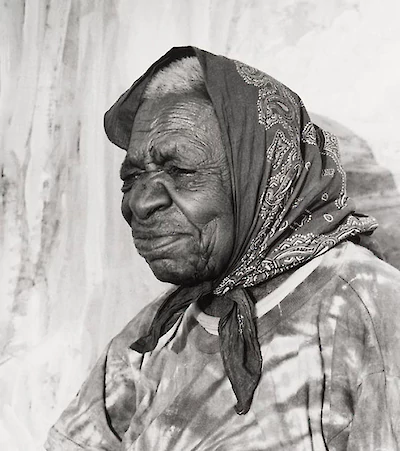Emily Kame Kngwarreye
Painting Utopia




The story goes that Emily Kame Kngwarreye, an Aboriginal Australian of the Anmatyerre clan, took up painting at age 79, and over the next eight years created nearly 3000 artworks, becoming Australia’s most famous indigenous female artist and breathing new life into the abstract expressionist style. But the truth is more complicated, and more interesting.
Kngwarreye, pronounced ‘no-worry’ was born in Utopia, an Aboriginal country in northern Australia, and was raised in the tradition of awelye, or ‘women’s ceremony.’ The awelye ritual manifests each woman’s role in the Dreaming, the Aboriginal cosmology describing the inter-relationship of all things. For Kngwarreye, the awelye involved painting her body with lines and dots representing her name, Kame, referring to the flowers and leaves of the yam, a food essential for survival in the harsh Australian desert.
Aboriginal culture is the oldest continuously practiced culture in the world, dating back an estimated 50,000 years. For millennia, Aboriginal art has been largely ephemeral, with body painting and sand drawings practiced through rituals like the awelye. In 1971, the school teacher Geoffrey Bardon began teaching western art techniques in the Aboriginal settlement of Papunya, birthing a new movement referred to as Aboriginal art of the Western Desert. In 1977, these techniques were introduced to the Utopia community, and Kngwarreye became one of the founding members of the Utopia Women’s Batik Group who created work as a communal means of income.
In 1988, when the Central Australian Aboriginal Media Association brought acrylic paints to Utopia, she adopted the medium that made her internationally famous. According to Kngwarreye, now almost 80 years old, her move from batik to painting was a concession to her failing eyesight. “I didn't want to continue with the hard work batik required—boiling the fabric over and over, lighting fires, and using up all the soap powder, over and over. That’s why I gave up batik and changed over to canvas—it was easier. My eyesight deteriorated as I got older, and because of that I gave up batik on silk—it was better for me to just paint.”
Kngwarreye’s first paintings stuck closely to the style established by Western Desert Art, fields of colored dots that both referenced traditional Aboriginal sand designs and played to the minimalist sensibilities of western collectors. Her deft sensibility for color and the remarkable story of an octogenarian new painter found an eager market for her work, and Kngwarreye’s paintings brought a million dollars in revenue for Utopia’s art community by 1990.
But Kngwarreye was not a new artist at 80, she was an elder in her clan and custodian of their Dreaming sites, with a lifetime of experience in one of the oldest artistic traditions in the world. As she worked in her new medium, her paintings evolved from dot paintings into a more difficult, spiritual form—the tangled root forms of her namesake plant, the yam.
...
Got questions, comments or corrections about Emily Kame Kngwarreye? Join the conversation in our Discord, and if you enjoy content like this, consider becoming a member for exclusive essays, downloadables, and discounts in the Obelisk Store.